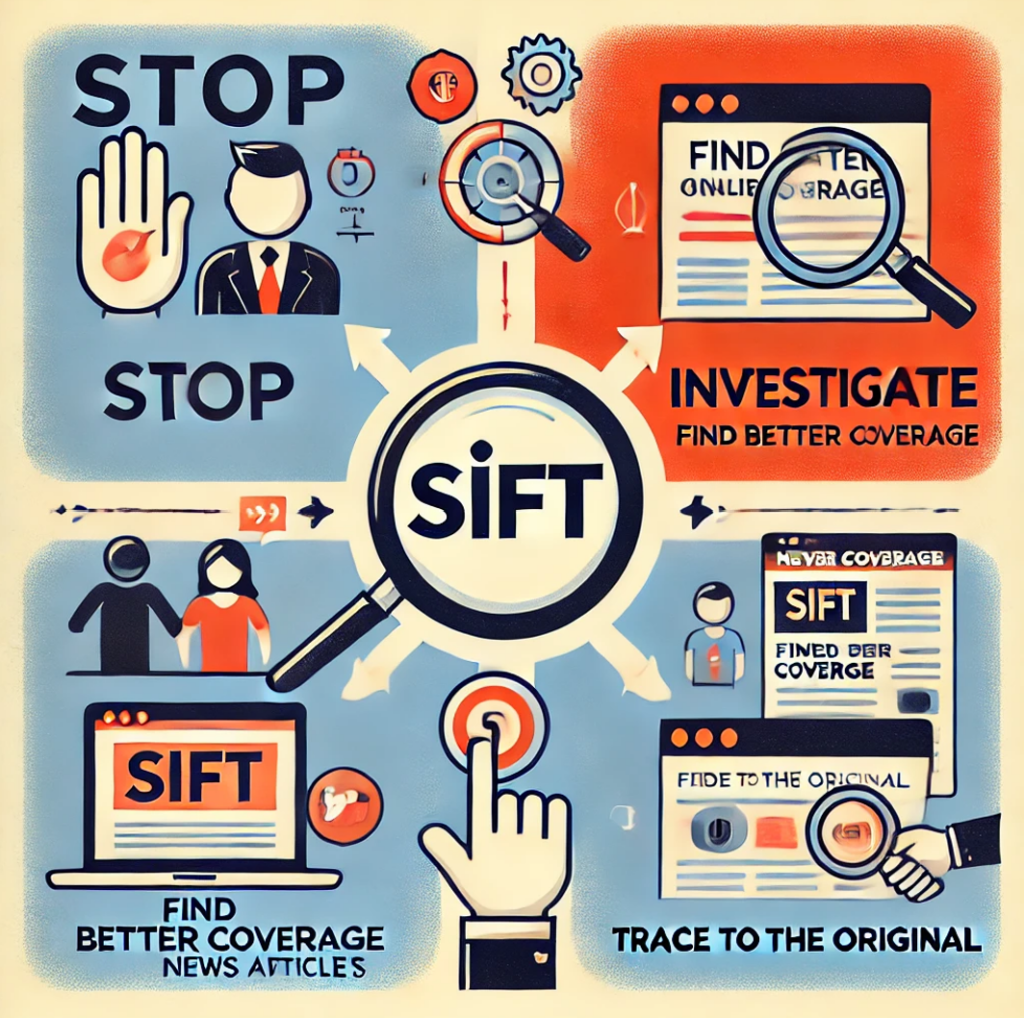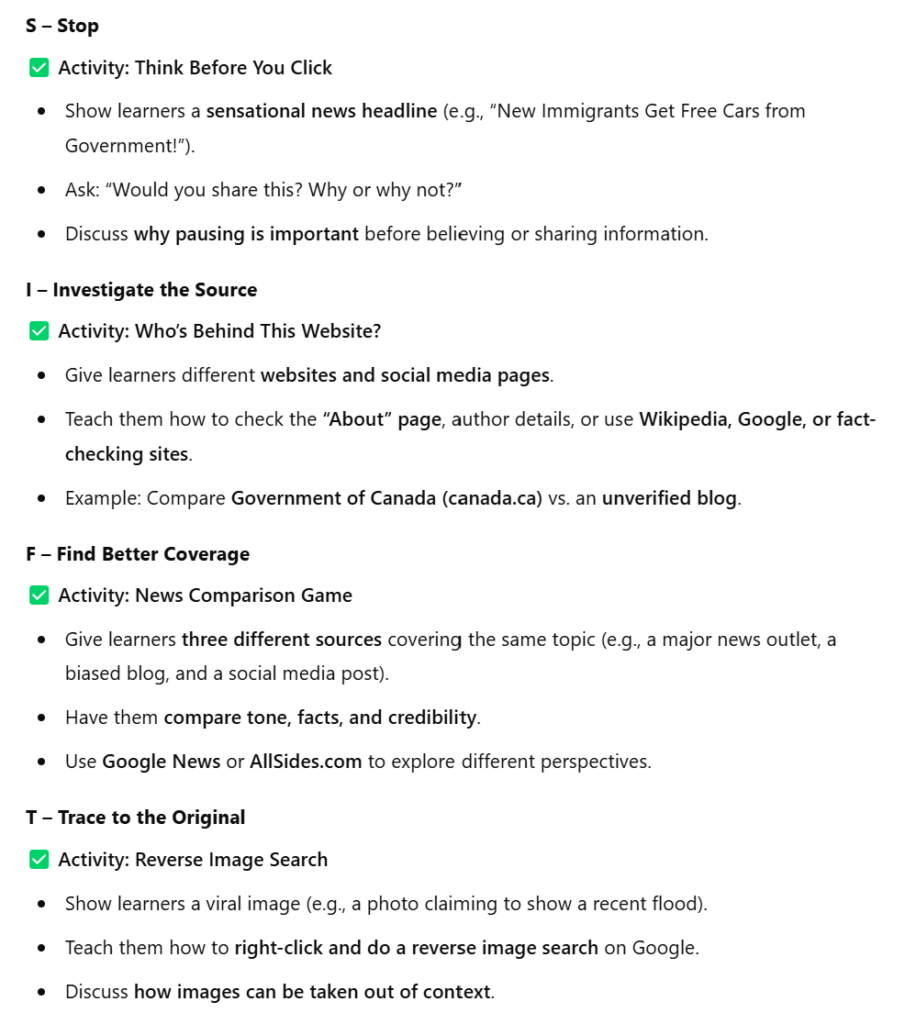It was interesting to catch part of the Zoom interview that Dr. Valerie Irvine had with Mike Caulfield, digital literacy expert. I had not heard of SIFT methodology before and after listening to the interview and checking out more information on SIFT, I began to wonder: if it is difficult for university students and professional historians (see the Stanford Experiment videos on the UChicago Library linked page) to verify online sources, how can my students, adult learners of English, accomplish this?
What is SIFT?
Mike Caulfield developed SIFT – Stop, Investigate the source, Find better coverage, Trace claims, quotes and media to the original context – as an evaluation strategy to determine if online content is credible and reliable. This is a skill that I feel is very important to my students as their limited English language ability may cause them to be more vulnerable to mis/dis information. They may not even know how to use SIFT in their first language, let alone an additional one.
So, I began to wonder how I could teach my students some of the SIFT skills, and came up with a few ideas:
- Try to use simplified language and scaffold each SIFT step
- Use real-world digital tasks to demonstrate SIFT (watching videos from social media, searching for jobs, reading news online, etc)
- Present SIFT with topics my learners can relate to – how does misinformation impact immigration, jobs, health care, for example
- Discuss misinformation targeting newcomers (scams, fraud, etc.)
- Encourage learners to fact check in their first language as well as in English
- Share already trusted sources

Image generated by ChatGPT using DALL·E.
I asked AI to give me some ideas of how to introduce SIFT to adult EAL learners and I got these suggestions:

I think all 4 of these activities look interesting, are real-world, and would be engaging for adult EAL learners if executed well. They would be challenging with lower-level students, as would explaining the concept of SIFT, depending on the learners’ level of digital literacy. But, they would be appropriate for my students who are at a LINC 5 level (low to mid-intermediate) if scaffolded and used with interesting content. SIFT is definitely something I will add to my Scams To Avoid unit with LINC 5.

Recent Comments